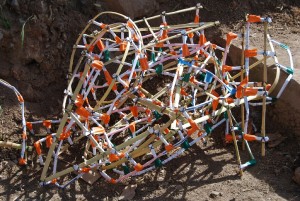The Ongoing Glory of Túpac Amaru

The name Tupac Amaru resonates strongly in Cuzco. Yesterday the city recognized the bearer of this name in a celebration which emphasizes that, though centuries have gone by, he is a figure little forgotten. For the two days prior his heritage has been the subject of lectures in the Paraninfo Universitario.
The first Tupac Amaru was the last Inca. After the Spanish invasion and the death of Inca Huáscar and his brother Atahuallpa, another brother rebelled and took the Inca throne to the Amazonian lowlands from which for almost half a century the Inca waged war against the Spanish and kept the possibility alive of a different Peru than the one ruled by the Crown of Spain.
That dream came to an end when Tupac Amaru I was captured, tried, executed in Cuzco’s Plaza de Armas, its Main Square, where today’s celebration is taking place.
Almost two centuries later, a cacique, indigenous head man, from Tungasuca–up the Vilcanota River from the city of Cuzco, took the name Tupac Amaru II and waged war against the Spanish state to protect the rights of indigenous leaders, as well as ordinary people.

This war divided Peru and was not, according to historians, clearly a race war between Indians and Spanish. Nevertheless, it did have strong overtones of independence and paved the way for independence. After the rebellion, the Creoles and Spaniards of Peru clung to the Crown out of fear of another rebellion, but the invading armies of Bolivar from the north and San Martín from the south brought independence and a partial fulfillment of the dream that Tupac Amaru came to represent.

On May 18, 1780, José Gabriel Condorcanqui was executed under sentence. His tongue was cut out and the Spanish tied his limbs to four horses to try to draw and quarter him, but he was able to keep that from happening due to his well developed physique. As a result he was beheaded in the main square, where the first Tupac Amaru was also beheaded.
Out of fear of the myth of the Inkarri, the Inca King who lay hidden and would some day return, the Spanish destroyed his body and scattered it in numerous communities.
Nonetheless, the image of Tupac Amaru stands for an Indigenous nationalism, not simply a return to the Incas but one that encompasses the ethnic diversity of Peru while recognizing the value of its indigenous ways and peoples. In Cuzco his image is particularly strong and is available to speak to the tensions between this ancient capital city, and the first capital of Spanish, Peru and the contemporary sear of government in Lima.





